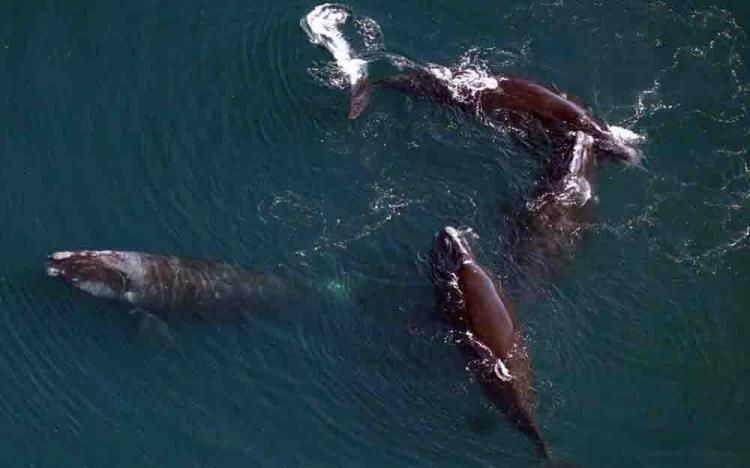Maine delegation deplores ‘hasty’ changes to whale rules affecting lobster fishery
 COURTESY / NORTHEAST FISHERIES SCIENCE CENTER
The federal government said it will take public comment in September and October on new measures to reduce risk from the lobster fishery to the North Atlantic right whale population.
COURTESY / NORTHEAST FISHERIES SCIENCE CENTER
The federal government said it will take public comment in September and October on new measures to reduce risk from the lobster fishery to the North Atlantic right whale population.
A set of new rules to protect the endangered North Atlantic right whale is on the way to being finalized by the federal government.
But the rules include “hasty, late-breaking changes” that would “significantly harm the livelihoods of communities that depend on fishing and lobstering without meaningfully protecting whales,” U.S. Sens. Susan Collins, R-Maine, and Angus King, I-Maine, and U.S. Reps. Chellie Pingree, D-Maine 1st District, and Jared Golden, D-Maine 2nd District, said in a letter to U.S. Department of Commerce Secretary Gina Raimondo.
The National Marine Fisheries Service’s Atlantic Large Whale Take Reduction Plan was first developed in 1997 and has been modified in various ways since then, in an attempt to save the endangered whales from extinction.
The delegation cited several of the newer proposed modifications, now under consideration, as potentially harmful for the lobster industry.
Gear marking
The federal government selected a measure that requires 12-inch green markings throughout vertical lines for gear set seaward of the boundary that separates state and federal waters.
A requirement of four green marks, each 12 inches in length, undermines the original intent as it would practically require lobstermen who fish in both state and federal waters to have two sets of gear — one for each side of the federal boundary line — a great expense and an economic burden, the delegation said.
Closed areas
A proposed seasonal closure that restricts fishing in an area off the coast of Maine “remains deeply troubling” due to its lack of strong scientific basis, the delegation said.
The draft rule included triggers for a closure in the future if it’s warranted. But an absolute closed area would be costly to the business models of numerous fishermen, said the delegation, adding, “We strongly believe that fishermen should not lose access to fishing grounds unless whales are present.”
Conservation equivalencies
Harvesters should be allowed to utilize slight variations in gear configuration in order to safely and efficiently meet or exceed new whale protection standards, the delegation said.
For example, a lobsterman should be able to use one trawl of 20 traps with vertical buoy-lines on each end or two trawls of 10 traps each with just one buoy-line on each of those two trawls, the latter being safer for someone on a smaller vessel.
“A rigid one-size-fits-all approach will force dangerous and expensive actions upon fishermen with no benefit to whales,” the delegation wrote.
The goal of the plan is to reduce the incidental mortality and serious injury to North Atlantic right whales, fin whales and humpback whales in U.S. East Coast gillnet, Atlantic mixed species trap/pot, and Mid-Atlantic lobster and Jonah crab trap/pot fisheries, in order to meet the goals of the Marine Mammal Protection Act and the Endangered Species Act.
In May, the National Marine Fisheries Service released a report saying the lobster fishery poses a risk to the endangered North Atlantic right whale population. The assessment called for the lobster fishery to reduce the potential for serious injury and death to right whales by 60% over the coming decade. Based on periodic evaluations during that time, the risk reduction target could be increased to 87% in 2030.














0 Comments